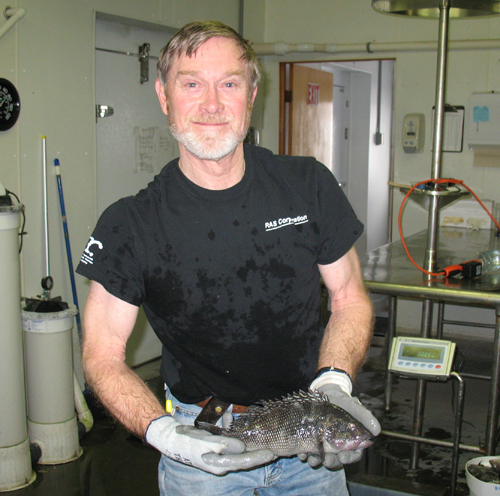Black Sea Bass
Centropristis striata
The black sea bass is found in Atlantic coastal waters of the United States from Cape Cod to Florida, and less commonly in colder waters north of Cape Cod. Ocean warming in recent years has led to concern that as black sea bass become more common in the Gulf of Maine they could prey upon juvenile lobsters. Black sea bass are highly desirable as a food and game fish, and the National Marine Fisheries Service sets annual commercial and recreational fishing quotas. They are the target of a small commercial fishery using otter trawl, handline, or pot/trap gear. Usually, when they are caught in trawls it as bycatch of another targeted species such as flatfish or scup, and vessels must have a federal black sea bass moratorium permit to keep more than the recreational limit. Because otter trawls occasionally capture and kill loggerhead turtles, the Monterey Bay Aquarium Seafood Watch considers fish caught in this manner as a species to avoid. Handline and pot fisheries are more selective, and black sea bass caught this way are considered a “Best Choice” for consumers. Total commercial landings of black sea bass in the northern fishery peaked at 9,883 metric tons in 1952, but in recent years have been about 1,400 to 1,700 mt annually, worth a record $8.5 million in 2013.
Because of their high commercial value, black sea bass are seen as a potentially valuable mariculture fish. Researchers in New England and elsewhere have been working with this species for several decades, but commercialization for aquaculture remains elusive. The ideal water temperature for black sea bass is 15 to 18 degrees C, so the northern stock migrates offshore and south in the winter. This means that in Maine they would need to be farmed in heated systems during winter. Black sea bass are protogynous hermaphrodites; a proportion of the fish population changes sex from female to male as they grow larger. This could prove to be a challenge for maintaining brood stock populations in captivity. Another challenge with this species is that they tend to be solitary and prefer inhabiting on-bottom structures. Despite these challenges, black sea bass remain of great interest as an aquaculture species because of their market demand, good price, and relatively fast growth rate. Former industry partner, Acadia Harvest, Inc., carried out growth, feeding, and marketing trials with black sea bass at the CCAR facility from 2014-2017.

